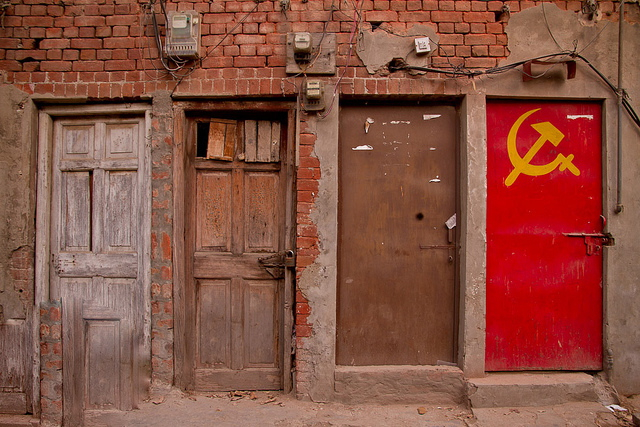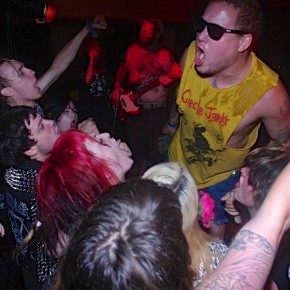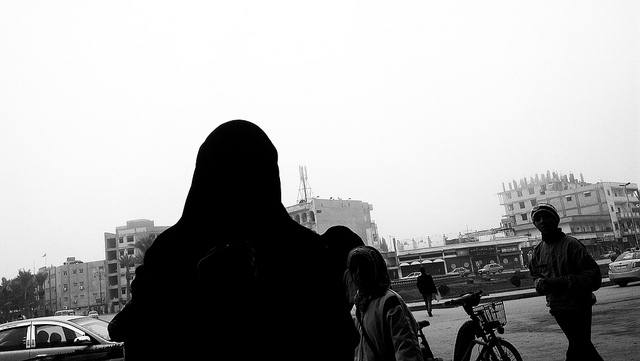The numbers add up. Pakistan needs a new operating system. 49% of the population lives in poverty. Of 146 countries surveyed for gender inequality, Pakistan scores 115. Lights go out for at least ten hours daily in cities, and up to twenty-two in rural areas. The leaked Abbottabad Commission report merely adds to these indicators by illuminating wider dysfunctions. The status quo can’t hold. The question is what’s going to replace it.
There is a great deal of hopelessness on this topic. Cynicism about the Pakistani Left is common. The idea of a left-wing insurrection seizing power from the landed classes is considered laughable. Talk of social change is confined to an oscillation between military and civilian elites. Not only is this thinking insulting, and elitist in its own way. It’s also disconnected from how grassroots politics continue to evolve in Pakistan.
We have to start with the word “socialism” itself. As many theorists have asked, what does socialism mean? And how does a given population get there? It seems that being dismissive of the Pakistani Left hinges on refusing to confront these questions critically. The Pakistani Left certainly does look inept when specific indicators are taken into consideration: including the presence of a unified socialist party, and an armed revolutionary vanguard, to name a few.
Standards such as these are born out of a reading of the post-1848 European labor movement, with the rhetoric being that these markers are absolutely necessary for productive social change to even potentially occur in a capitalist society. I have personally lost track of how many passé leftists I have heard posit this line of thinking at least partially. If there is no party, there is no chance to move beyond capitalist governance. If there is no vanguard, there is no chance to move beyond capitalist governance. Therefore, countries such as Pakistan, which have neither, possess no ability to meaningfully move beyond capitalist governance.
This dismissal is aggravating for a number of reasons. Not least among them is that it is bizarre to cling to the labor movement as an absolutist model for how socialism can be pursued and institutionalized. First, it betrays the principles of the Enlightenment to be so uncritical of a social model, as the labor movement almost becomes a mythology unto itself. Second, it’s unclear how the labor movement can realistically be considered the how-to manual for building socialism, when it was crushed in the United States, beheaded in Fascist states, and co-opted by Communists in others. You can imagine what the Pakistani version of this narrative would be.
This said, Pakistan’s Left is to be reckoned with if we know how to discuss and mobilize it properly. Some central organization would certainly help. However, we should not fight the fact that the Pakistani Left is divided into organizations and protest groups that tackle various issues, whether the Human Rights Commission of Pakistan and Revolutionary Association of the Women of Afghanistan, or now regular protests against drone strikes, and the energy crisis. This conglomeration should be discussed as a more liquid form of organizing. A loose community of activists ends up pursuing a wide variety of grievances simultaneously, with groups such as Labour Party Pakistan, Pakistan Trade Union Defense Campaign, and The Struggle seeking leftist unity through networks and alliances, rather than stifling central control that directs energies towards fixed priorities.

Critics may assert that this reality is endemic to a divided left, and that capitalism should be a priority that needs to be tackled ‘first.’ However, this ignores the deeper concerns about power that is at the root of all these issues. One does not simply begin protesting a drone strike. Or the electricity shortages. Or the treatment of women in Afghan communities. There is a certain drive that must grip those involved in order for these problems to even qualify as unfair, let alone be worthy of organized confrontation or mass protest. Even if the Pakistani Left cannot agree on core demands, every activist involved is mobilizing because they wish to alleviate social injustice in some way.
The overall demands are bound to change as organizations continue to post results. These include the Tenants Association of Punjab, which has organized at least 100 000 landless peasants and has been making major gains against military elites who own farms in the town of Okara, and the Labour Qaumi Movement, which launched a major and successful loom workers strike in Faisalabad in 2010.
As these groups produce tangible change in Pakistani society, they will inevitably find themselves tempted towards more ambitious means of tackling social injustice. Other groups could easily begin doing the same, with new objectives that are met, but also seen as not sufficiently alleviating the sense of raw unfairness that caused their political mobilization in the first place. This is actually a characteristic of mass movements that are currently occurring all over the world, and is one of the main reasons that park demolition in Turkey’s Taksim Square and fare increases for transit in Brazil’s Rio de Janeiro could lead to such large demonstrations so quickly. Ultimately, these issues were about an aspect of the system that was unfair, and confronting that fact meant unleashing deeper and greater confrontations against unfairness in a neoliberal society.
Some readers may argue that these examples are irrelevant to Pakistan. However, a similar movement did occur in the country from 1968 – 1969. It began as a single student march against police confiscation of contraband goods in November 1968. When police brutality resulted in the death of one student, wider student protests erupted, quickly spiraling out of control as autocrat Ayub Khan ordered mass arrests following an assassination attempt. These arrests backfired, and the protests expanded greatly. By February 1969, student demonstrators in major Pakistani cities were joined by other activist groups, such as women’s and professional organizations, labor unions, and others. Ayub Khan resigned as President on 25 March 1969, once again declaring martial law and handing over power to General Yahya Khan. Although this resignation, and the later election of Zulfikar Ali Bhutto, did not shift Pakistani society as much as possible, it did demonstrate the strength and potential of the Pakistani Left.
Not much has changed. The Lawyers’ Movement of 2007 began as professional resistance against General Musharraf infringing on judicial independence, and quickly ballooned into an urban protest movement against his rule. Bearing in mind these dynamics, the question for the future is therefore not whether the Pakistani Left has potential. It is how to best apply the strength of individual leftists, and how to envision alternative forms of democracy through their independent efforts.
The overthrow of Musharraf was mainly a movement by the urban middle-class in favor of a restoration of liberal republican democracy. As Pakistani unrest continues to simmer, and other classes have yet to definitively weigh in, we may end up finding out the answer sooner rather than later.
Photographs courtesy of Usman Malik and John Milton. Published under a Creative Commons license.





